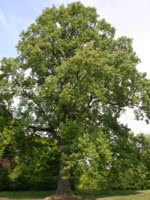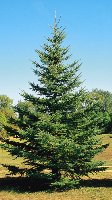Mon-Fri 9am - 5pm Mountain time
Black Hills Spruce vs Tulip Poplar
Liriodendron tulipifera
Picea glauca var. densata
NOT AVAILABLE THIS SEASON - MIGHT RETURN
Tulip Poplar is the perfect shade tree for wide open spaces. It has a shallow and extensive root system, so ensure you give it space to grow. The attractive and showy, yellow-orange, tulip shaped flowers are where this tree gets its name.
Tulip Poplar is somewhat rare in Canada but highly sought after as it is difficult to grow. Does best in a moist, well-drained soil.
Black Hills Spruce is a subspecies of White Spruce native to the Black Hills of South Dakota. It has a strongly conical form, slower growth rate and denser foliage than typical white spruce, making it preferable as a specimen tree for smaller suburban lawns. It also responds well to pruning, and can be used as a hedge or even bonsai.
Tulip Poplar Quick Facts
Black Hills Spruce Quick Facts
In row spacing: 3 - 4 m (10 - 12 ft)

